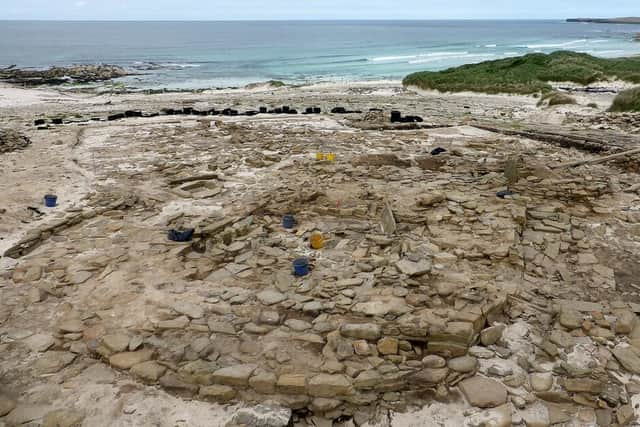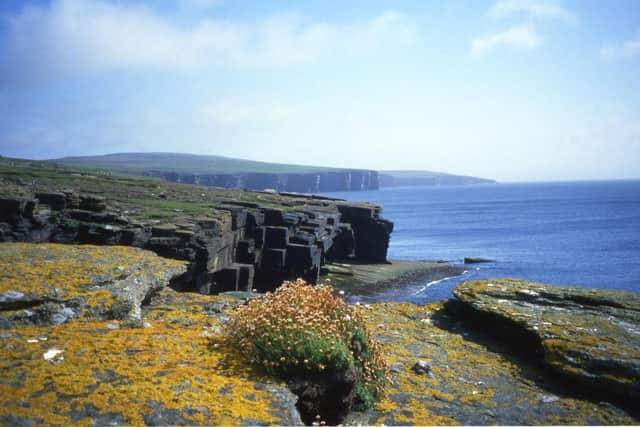Island attracted 'influx' of women from Continent around 4,000 years ago
DNA analysis of human remains at Links of Noltland on Westray – a settlement of 35 buildings including houses, workshops, and sauna-house together with a large cemetery – found the women lived alongside local men but did not marry and have children on the island.
The settlement was inhabited during the Bronze Age from around 2500BC to 1200 BC.
Advertisement
Hide AdAdvertisement
Hide AdThe females have been identified as Beaker People - who can be traced back to the Pontic -Caspian steppe which covers a huge area from the northeastern corner of Bulgaria to Ukraine, Russia, Kazakhstan and the Ural Mountains – and migrated west over time.
While the Beaker People are known to have settled across Britain and into the Highlands, it is the first substantial evidence that they also made it to Orkney.
Dr Graeme Wilson, a director of EASE archaeology, which is based on Westray, revealed the findings in a recent article for Historic Environment Scotland, with the genetic results also published in the Proceedings of the National Academy of Sciences.
Dr Wilson, in the article for HES, said: “The genetic findings show migration by people with continental ancestry, frequently referred to as the ‘Beaker People’, had spread not only across mainland Britain, but had also reached Orkney.


"Interestingly, the influx to Noltland was female dominated and this had a unique impact on the site’s genetic makeup.
"Genetic analysis shows the community at Links of Noltland was composed of local males and incoming females of continental descent. The long history of the male lineage indicates males remained and inherited whilst females moved out.
"This demonstrates not only the fact of immigration but also the way in which it occurred. In other words, the men stayed with the farms while the women married out of the community.”


Dr Wilson said it appeared the men in the Noltland community traced their descent from the original Neolithic population with these lineages persisting for at least another 1000 years. Meanwhile, across the rest of Britain continental migrants entirely replaced the existing Neolithic male lineage.
Advertisement
Hide AdAdvertisement
Hide AdThe findings also counter a theory that Orkney became an insular place following the golden age of the the Neolithic, when the islands became a cultural centre defined by large-scale monument building.
“The results demonstrate how Orkney was taking part in wider networks at a time it was previously thought isolated and undergoing a kind of ‘recession’. Dr Wilson added.
Beaker People have usually been identified by the presence of their distinctive bell-shaped pottery, which was sometimes buried alongside them, although this has not been found in any great quantity in Orkney.
As well as the Noltland community embarking on shared activities, such as the sauna, new architecture, technologies and farming techniques were also adopted.
Dr Wilson said this “blending of new and old ideas” appears to have led to a “peaceful and productive period” on Westray.
"Far from presenting an existential threat, as has sometimes been suggested, the influx of people seems to have coincided with a period of social stability,” he added.
The evidence also indicated the site was slowly becoming inundated with sand, making life more difficult for the community.
Today, the site is severely threatened by erosion.
Comments
Want to join the conversation? Please or to comment on this article.
